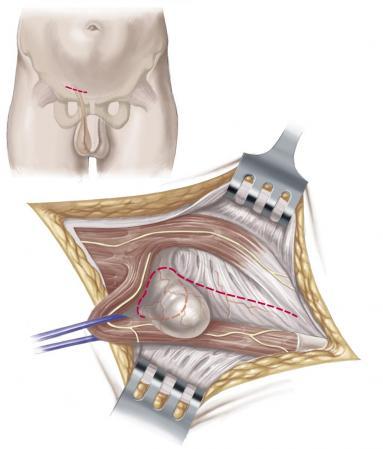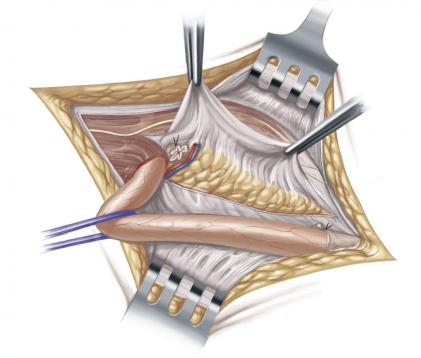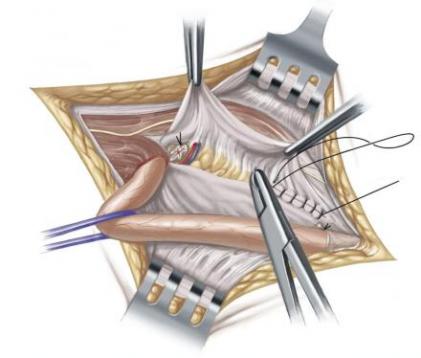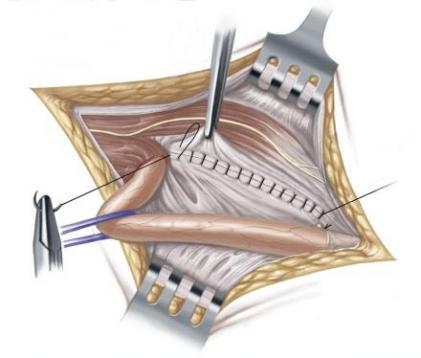3.1.1 Shouldice operation
This is an open surgical technique where the hernia gap is closed using tissue harvested from the patient himself. The surgeon removes a piece of skin, measuring around 5 to 8 cm and running crosswise, from above the inguinal ligament [Fig. 6], exposes the hernial sac via this approach [Fig. 7] and opens it to check the structures contained in it, and if necessary treat it. Next, the abdominal contents are repositioned in the abdominal cavity, the hernial sac is removed and the peritoneum sutured [Fig. 8]. To bestow better stability and strength on the posterior wall of the inguinal canal, the inguinal ligament is sutured to the transverse fascia [Fig. 9]. This suture is composed of several rows for greater safety [Fig. 10].
The Shouldice operation is used primarily for smaller hernia openings and is normally conducted under general anaesthetic, but can also be performed using spinal anaesthesia or local anaesthesia.

Fig. 6 and 7: Skin incision and exposure of hernial sac (Shouldice)

Fig. 8: Suture closure of abdominal wall (Shouldice)

Fig. 9: Suturing of inguinal ligament to transverse fascia

Abb. 10: Multirow suture (Shouldice)
